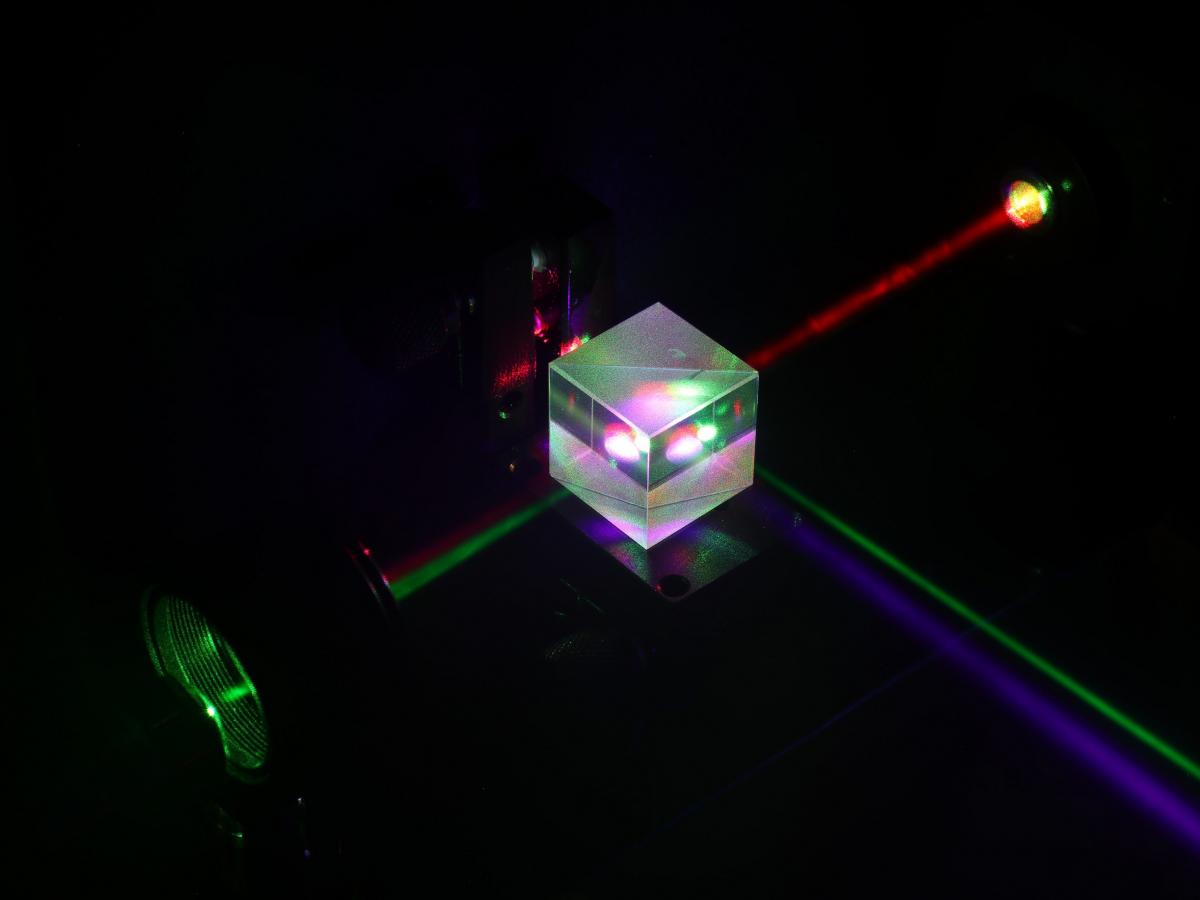
By looking at the colour of light in these crystals and the amount of gas absorption, researchers identify which and in what concentration gas molecules are present.
Researchers at the University of Adelaide have brought medical diagnoses via breath analysis a step closer with proof-of-concept testing of the technology.
The University’s Institute for Photonics and Advanced Sensing (IPAS) is developing a Human Breath Analysis Instrument using Frequency Comb Spectroscopy, a highly accurate laser-based measurement tool that produces many different colours of light.
Lead researchers Dr Sarah Scholten and Dr Chris Perrella believe the research represents a pivotal moment in health innovation as it holds the potential to revolutionise the simplicity, speed, and efficiency of health assessments.
“Breath analysis detects gas-analytes such as exhaled volatile organic compounds (VOCs) and inorganic gases that are important biomarkers for various disease-types,” Dr Scholten says.
“By looking at the colour of light and the amount of gas absorption, we can identify which and in what concentration gas molecules are present.
“Applying this highly accurate technique to breath analysis creates a tool that can pinpoint molecular health markers in human breath faster and more precisely.
“Also, it can quickly detect even tiny traces of molecules, and differentiate between similar molecules.”
While the concept is not new, Dr Perrella says the results of testing with a new prototype developed at IPAS are exciting and promising.
The team conducted tests with baker’s yeast, a simple analogue for human breath.
“As with humans, baker’s yeast produces carbon dioxide as a major component of its ‘breath‘, and the composition of the yeast’s emission changes depending on its diet and environment,” Dr Perrella says.
“We showed the prototype could differentiate isotopes of carbon dioxide – which could be used as markers of health – and were able to monitor carbon dioxide production in real-time as the yeast ‘breathed.’
Applying this highly accurate technique to breath analysis creates a tool that can pinpoint molecular health markers in human breath faster and more precisely. Dr Sarah Scholten, University of Adelaide
“What we have proven is that our spectrometer was able to observe the changing metabolism of a living organism by monitoring the concentration of CO2it produces.
“And, by varying the temperature, type and amounts of sugar and the quantity of yeast we were able to observe the anticipated changes in our readings.
“This proof-of-concept project has also been invaluable in helping us to define what adjustments may need to be made to the spectrometer to increase its capacity to detect much smaller concentrations of biomarkers found in human breath.”
This project brings together various researchers from the newly formed Australian Research Council (ARC) Centre of Excellence in Optical Microcombs for Breakthrough Science (COMBS), of which University of Adelaide is a partner university.








